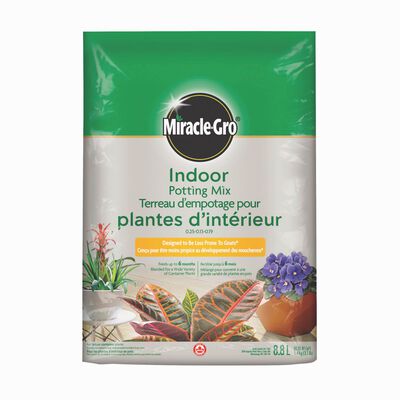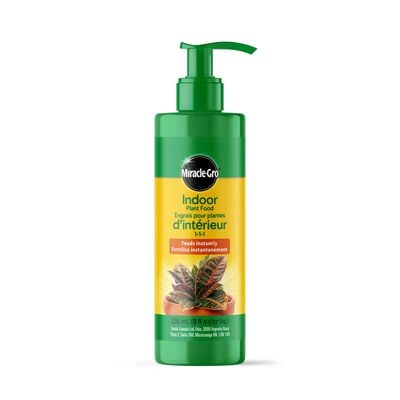
How to Grow Fiddle Leaf Figs
- Place plants in lots of indirect light.
- Plant in Miracle-Gro® Indoor Potting Mix.
- Water when the top 1 to 2 inches of soil are dry.
- Feed with Miracle-Gro® Indoor Plant Food.
- Prune when the plant begins to get too tall.
- Watch for problems and treat them accordingly.
If you're looking for a dramatically different houseplant, consider growing a fiddle leaf fig. This plant is aptly named, as each leaf is in the shape of a fiddle (or violin). In the wild, these plants are native to the African rainforest, reaching heights of 40 to 50 feet. Thankfully, they can be maintained at much shorter heights indoors, though they most likely will not bear any fruit. Fiddle leaf figs are somewhat picky about growing conditions indoors, but they're worth the work for the excitement and life they add to the décor in a room.
Here's how to grow fiddle leaf figs.
Where to Grow Fiddle Leaf Figs
Grow fiddle leaf figs indoors in a place that gets a lot of indirect light, since direct sunlight may burn the leaves. To ensure even growth, give each pot a half-turn once a week. These plants like an even temperature of about 20 degrees C, so keep them away from cold, drafty areas and heating vents.
How to Plant Fiddle Leaf Figs
Managing soil moisture is critical to success with fiddle leaf figs. Grow plants in Miracle-Gro® Indoor Potting Mix, as it contains coconut coir, which holds and releases water and helps soil easily re-wet. Add it to a container that is 1/3 wider than the plant's root ball and has several drainage holes. Fill the bottom 1/3 of the pot with the potting mix, then place the plant so that the top of the root ball is about an inch below the top of the container. Fill in around the root ball with more potting mix, then thoroughly water the plant and let it drain before you put it in place.
Repot fiddle leaf figs when you see roots beginning to grow out of the bottom of the container, following the steps above. Don't repot more often than necessary because these plants do not like being disturbed. When the plant is still small and growing rapidly, you may need to repot it every year.
How to Water Fiddle Leaf Figs
Fiddle leaf figs are picky about water and respond quite poorly to overwatering. Always check the soil first, and water only when the top 1 to 2 inches of soil are dry. Never let the container sit in standing water, so if water drains out the bottom of the container, empty out the dish or basin in which it is sitting. In addition, these plants like humid conditions and respond well to a once-weekly misting of the leaves. Just be sure to use room temperature tap water and a clean spray bottle.
How to Feed Fiddle Leaf Figs in Containers
A month after planting, you'll want to add more nutrition to the soil for best growth of your fiddle leaf fig. Apply Miracle-Gro® Indoor Plant Food, which is specially formulated for plants being grown inside, by putting it directly on the soil or mixing it with water. Be sure to read and follow the instructions on the label.
How to Prune Fiddle Leaf Figs
Fiddle leaf figs can be grown as multi-stemmed or single-stemmed plants, with either bare or leaf-covered stems or trunks. For a tree-like look indoors, remove the lower leaves. To control the size, prune to the desired height, cutting back to just above where a leaf is sprouting.
How to Help Prevent Problems with Fiddle Leaf Figs
The best way to prevent problems with fiddle leaf figs is to decide where you want to grow them and then leave the plants there. Once they get used to an area they don't like to be moved. If you begin to see brown spots on the leaves, though, the plant may be experiencing cold damage, so check to make sure it's not under an air conditioning vent or near a drafty door or window. If the leaves begin to turn yellow, you are probably overwatering the plant, so you'll want to cut back.
While fiddle leaf figs are worth the added effort, they do require a bit of, well, fiddling. For a leafy houseplant that requires less attention, try growing a snake plant, dracaena, or ZZ plant.
However, if you like a little drama—both in terms of decor and your plant care routine—fiddle leaf figs are stunning sculptural plants. If you're ready, go for it! This handy guide will help you thrive.

